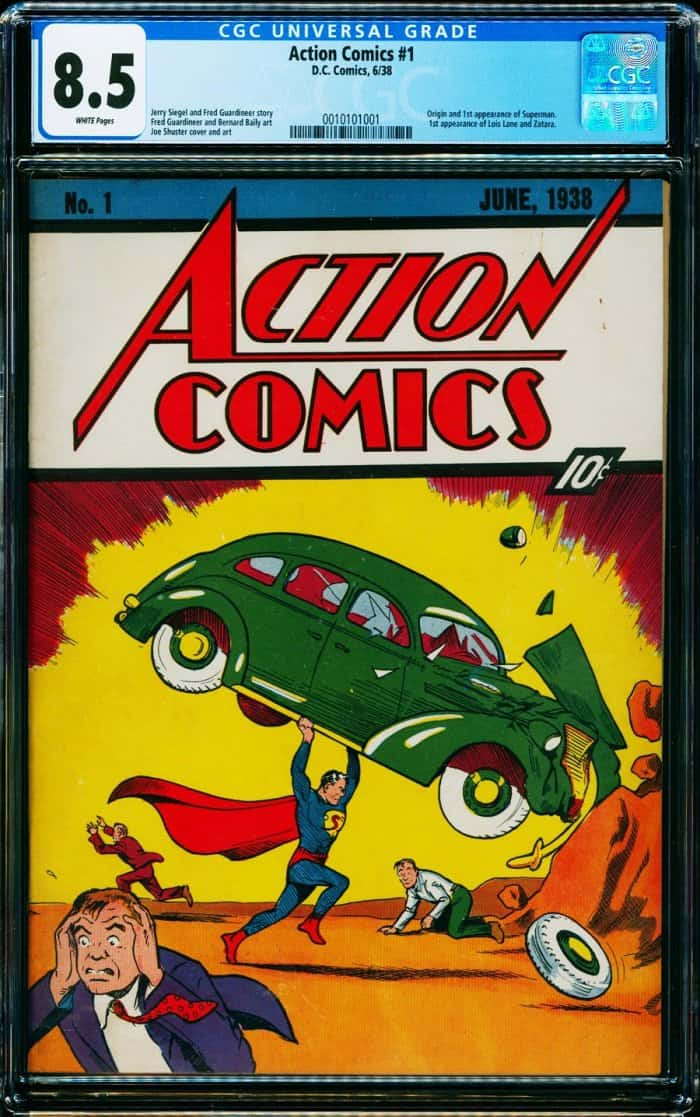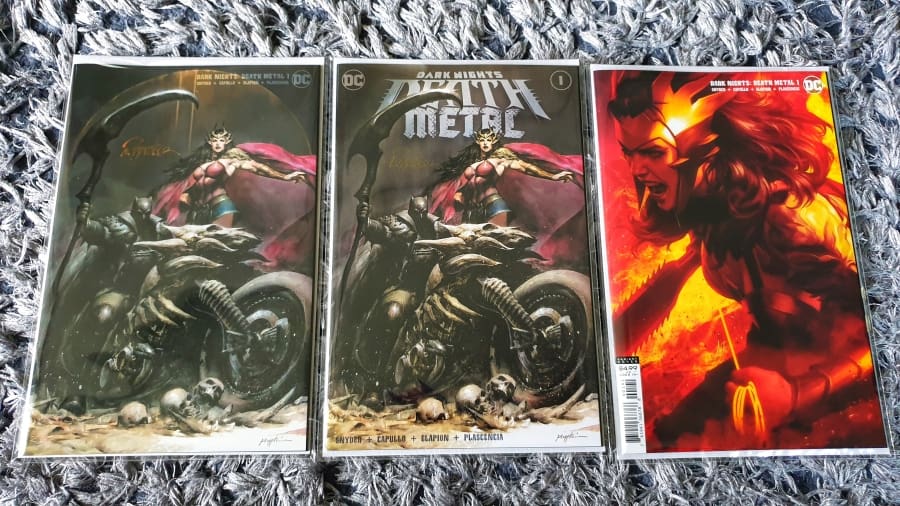4 Reasons Why Collecting Physical Comics Is Still Worth It
In the age of digital comics and media streaming, the idea of collecting physical comics may seem like an antiquated hobby. After all, you can read comics on your tablet or phone with services like Marvel Unlimited or Comixology at your fingertips. So is there any point to hunting down and acquiring those printed issues anymore?
For many comic fans and collectors, the answer is an emphatic yes. Despite the convenience of digital comics, there are still some distinct benefits and joys that come with collecting physical comic books:
Tangible Ownership
There’s something special about holding an actual comic book in your hands that a digital copy just can’t replicate. You own a piece of printed art and storytelling that is uniquely yours in a way that digital “ownership” isn’t quite the same.
Part of the appeal is the tactile experience of holding the comic – feeling the paper’s texture, smelling that old newsprint aroma, and making the pages crinkling sounds as you flip through them. It connects you more viscerally to the art and stories contained within.
With digital comics, you’re simply viewing the content remotely through a screen. There’s nothing physical tying you to that comic other than some data files. And those files can become inaccessible if a service goes away or you lose your account credentials.
But with a physical comic book or collected graphic novel on your shelf, you know you’ll always be able to pick it up and revisit it anytime. It’s permanently in your possession to re-read, lend to friends, get signed by creators, or pass down to future generations. You have full custody of that comic’s journey.
For many collectors, there’s also a sense of pride in maintaining a carefully curated collection on their shelves. It’s a living archive and library that they’ve put time, money and passion into building. Looking over their longboxes or displays can spark nostalgia, conversation and a feeling of custodianship over these printed storytelling artifacts.
While digital comics have their conveniences, for many fans and collectors there’s simply no replacing the special connection of tangible comic book ownership. It’s a passion for the craftsmanship and reading experience that extends beyond just consuming the story itself.
Cover Art Appreciation
Comic book cover art is a crucial part of the overall reading experience and collecting appeal. Those bold illustrations and designs don’t just catch the eye on the spinner racks, they’re meant to set the tone and ramp up the excitement for the story contained inside.
The level of detail, dynamic poses, and eye-catching graphics simply don’t have the same impact shrunk down on a small digital screen. Viewing the cover art at its originally published dimensions allows you to fully appreciate the artwork and vision of the illustrators and designers.
From classics like Amazing Spider-Man #121 with the iconic black costume debut to Era-defining works like The Watchmen covers by Dave Gibbons – these are pieces of art that deserve to be admired in their full-sized glory. Cover art has also become increasingly innovative with attention-grabbing gimmicks like lenticular 3D motion, textured elements, and chromium enhancements.
For comic collectors, having these original cover artworks on display, slabbed, and preserved is a huge part of the draw and showpiece for their collections. It’s like owning a rotating art gallery of unforgettable imagery.
The Collector’s Hunt
For many collectors, the true joy comes from the thrill of the hunt itself. Scouring comic book stores, trading with other fans online and at conventions, digging through longboxes at comic shows – it’s all part of the quest to complete runs and find those elusive keys.
There’s an electrifying rush that comes with finally tracking down that one issue you’ve been searching for to fill a hole in your collection. Or unearthing a hidden gem like a rare variant cover or vintage issue with high grade for a steal. It transports you back to being a kid, joyfully completing those stamp or baseball card collections.
The hunt is made all the more exciting by the social interactions and bonding that occurs in comic collecting circles. Connecting with other die-hards, sharing stories and insights, making new friends over a mutual love of comics. There’s a tight-knit community aspect that develops.
You Are Preserving History When You’re Collecting Physical Comics
Comic books have been around for over 80 years and help chronicle pop culture history through iconic characters, innovative creators, and pivotal storylines. Having a physical record of this sequential art history is invaluable.
By collecting comics and graphic novels, fans and curators help ensure these vital artifacts are preserved and available for future generations to appreciate and study. Too often, older comics have been tragically lost or damaged due to neglect or lack of care. But surviving copies from the Golden Age, Silver Age, Bronze Age and beyond live on through collectors.
In recent decades, comics have also transcended from niche entertainment to mainstream media franchises through superhero movies, prestige TV series and more. Their historical and cultural significance will only grow moving forward.
Comic book museums, libraries and private collectors all play an important role in archiving and maintaining this four-color tapestry. Much like ancient carved tablets and manuscripts from past eras, comic books provide a unique captured timeline of mythology, morality tales, and evolving societal perspectives.
Investment Potential of Collecting Physical Comics
While comics shouldn’t be seen as a guaranteed investment, rare and valuable issues have certainly paid off for collectors willing to hold on to them long-term. Things like first appearances of iconic characters can skyrocket in value over the decades as they become highly coveted by collectors and investors.

One of the most famous examples is Action Comics #1 from 1938, which featured the first appearance of Superman. A pristine copy sold for an astonishing $3.25 million in a private auction in 2021. Other landmark issues like Amazing Fantasy #15 (first Spider-Man) and Detective Comics #27 (first Batman) have also sold for millions.
However, you don’t necessarily need to have a fortune to get in on potentially appreciating comic investments. More recent key issues like New Mutants #98 (first Deadpool) from 1991 have sold for over $40,000 in top condition. The first full appearance of Venom in Amazing Spider-Man #300 (1988) routinely sells for > $500 for a graded near-mint copy.
The sky-high prices are driven by a combination of rarity, demand, and condition. Comics that are relatively well-preserved from decades ago in top grades (9.8 – 10.0) by third-party grading companies like CGC can be the ones to seriously spike in value on the collectible markets. Grading and encasing help preserve the condition.
More recent issues within the last 20 years featuring a character’s first appearance or a pivotal moment in their story arc can be smart investments too, especially if the character is later adapted into popular movies or TV shows.
Of course, not every comic is destined to be a $1 million prize. But treating your beloved comics with care, getting them graded, and holding on to key issues over long periods has allowed many collectors to see nice returns while enjoying their hobby. An eye for spotting emerging characters and storylines that could be the next big thing is also helpful for investment purposes. You can still make money by collecting physical comics as a hobby if you do it right.
While collecting physical comics offers a unique experience, it’s not without its challenges. The cost of accumulating individual issues can become prohibitive over time. Storage space is also a consideration as your collection grows larger. But for die-hard comic book fans and collectors, there’s still something uniquely special about owning the actual comics. Whether you collect for nostalgia, investment, or just the love of it, physical comics aren’t going away anytime soon.
Not sure where to start? Read A Beginner’s Guide To Comics – How To Start Reading Comics?
